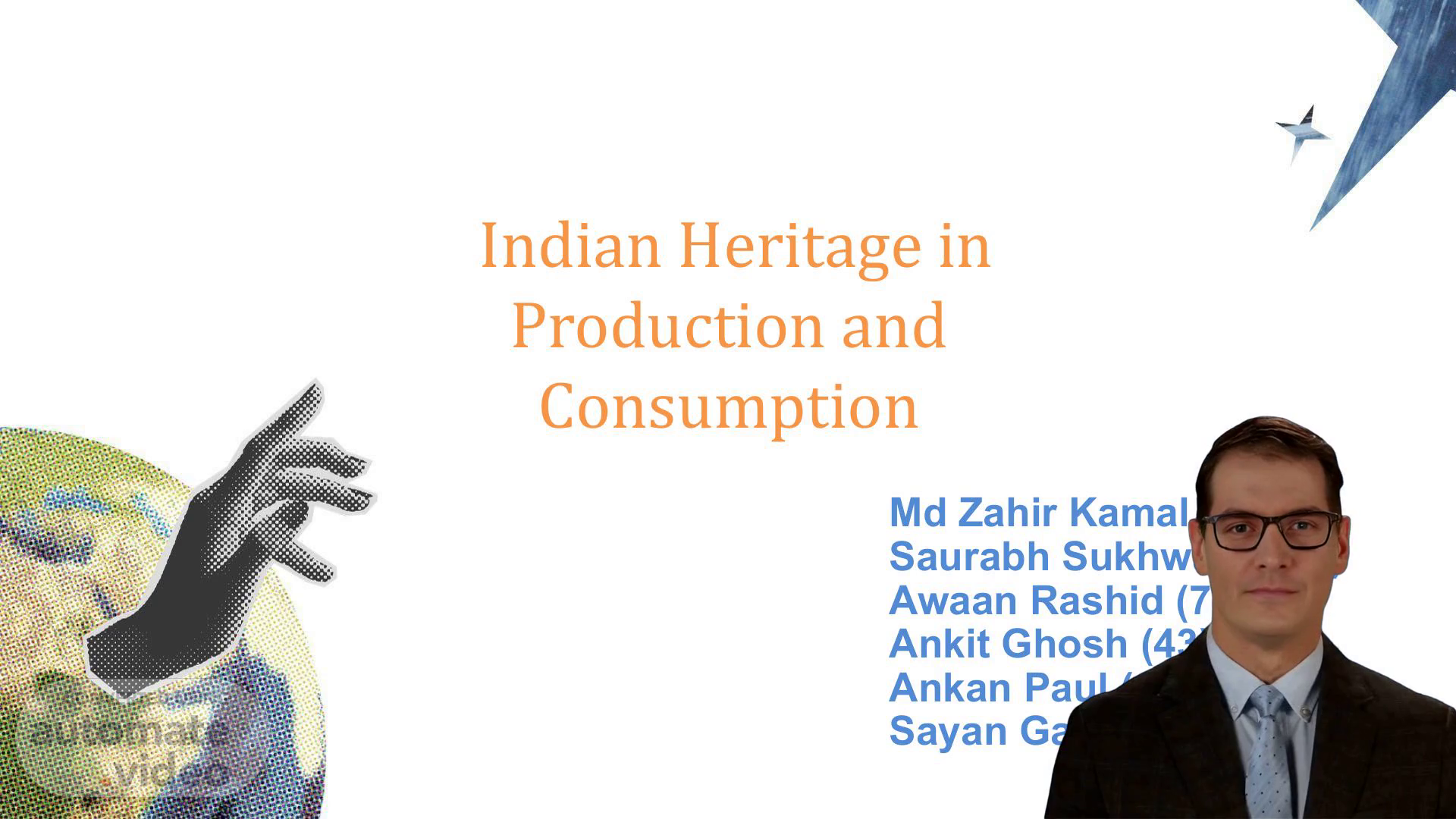
Business Communication PS
Scene 1 (0s)
[Virtual Presenter] Welcome everyone! Today, we will be discussing Indian heritage and its influence on production and consumption in India as well as the world. We will be exploring how ancient cultures, empires and the post-independence period have impacted India’s industrial and commercial activities. I am sure the information we will uncover today will be quite fascinating and enlightening. Let us begin our journey!.
Scene 2 (27s)
[Audio] India has long been a major player in producing and consuming products and services that have changed the world. From the textiles of the textile industry and the spices of the spice trade, India has been a key player in providing goods and services to the world. This presentation will explore the Indian heritage in production and consumption, and how it has shaped global activity over the centuries. We will discuss the challenges and changes in Indian production, and how it has had a lasting effect on the Indian landscape. We invite you to come along as we examine the influence of India's past on the world today..
Scene 3 (1m 6s)
[Audio] India has a long history of production and consumption which is deeply embedded in its ancient civilization. Our culture is a vibrant tapestry of empires, philosophical thought, majestic palaces, and classical music. This heritage has been essential in enabling India to remain resilient and creative in its production and consumption. Today, let us explore how Indian heritage has maintained a firm hold in production and consumption in the country..
Scene 4 (1m 36s)
[Audio] Since ancient times, India has been known for its unique and vibrant cultural heritage. The Indus Valley Civilization has been widely recognized for its remarkable urban planning and artistic accomplishments. Over the centuries, India has been largely impacted by powerful empires such as the Mauryas, Guptas, and Mughals which have contributed to the development of its architecture, literature, and other cultural aspects. Following independence in 1947, India adopted a mixed economy model to promote its economic growth. This was supported by the early Five-Year Plans (1951-1955) that highlighted the importance of planned economic development, with a focus on agriculture, industry, and social welfare..
Scene 5 (2m 24s)
[Audio] India has a long history of remarkable craftsmanship and textile tradition. From the ancient times its advanced metallurgical and pottery techniques have left behind a variety of artifacts. The country is widely acclaimed for its textile heritage, with its well-known regions like Varanasi, Banaras and Kanchipuram famous for their exquisite silk products. Traditional jewelry and intricate patterns on fabrics reveal the profound admiration for culture and artwork that this ancient nation possesses..
Scene 6 (2m 56s)
[Audio] India is renowned for its unique cultural heritage that is reflected in its production and consumption. The country offers a tapestry of distinctive traditions, rituals and practices, ranging from its diverse culinary specialties to traditional clothing to different festive occasions. From the signature tandoori dishes of the North to the spicy fish curries of the South, Indian regional cuisines are incredibly varied and flavorsome. Traditional Indian clothing is heavily steeped in culture, from the elegant saris of Gujarat to the Lungis of Bengal. Furthermore, an array of traditional celebrations across the country, like Diwali, Holi, Eid and Christmas, create a vibrant and unique cultural experience..
Scene 7 (3m 42s)
[Audio] India has a deep-rooted heritage and culture. Ancient carvings and temple structures as well as its vibrant cuisine have made India renowned for its heritage and craftsmanship. Its influence has traversed beyond its boarders, from software engineering to IT, India has demonstrated its capacity to adapt, create, and succeed globally. Although adapting to new technologies, India has safeguarded its cultural traditions. Witness the superior talent and originality of India's cultural legacy in manufacture and utilization..
Scene 8 (4m 18s)
[Audio] India's production and consumption patterns have beenshaped by its history and culture. Various forces, such as colonialism, globalization and urbanization, have altered the way goods and services are produced and consumed in India. This has led to an increasing awareness of India's indigenous heritage, and a growing interest in India's traditional methods of production and consumption. Such a revival of cultural traditions provides an opportunity to recognize India's distinctiveness while also promoting sustainable development..
Scene 9 (4m 52s)
[Audio] India's remarkable legacy in production and consumption has a history dating back millennia with ancient temples bearing intricate carvings, exquisite textiles, crafted metals, and pottery as evidence of India's exceptional creativity and skill. Though ever-evolving, Indian heritage continues to shape its identity by connecting its past with the present. It is a source of pride, a reflection of diversity, and a testament to India's global cultural influence. Therefore it is necessary to embrace India's heritage, cherish its traditions, and celebrate the innovation it brings to the world..
Scene 10 (5m 29s)
Thank You.